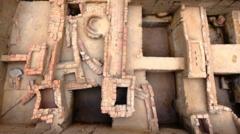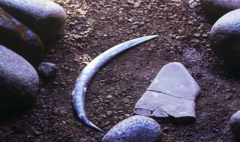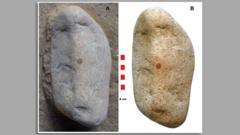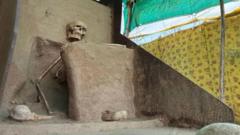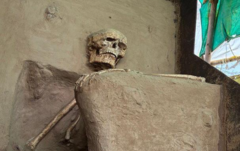In the early 1900s, Rakhaldas Banerjee emerged as a trailblazing archaeologist, credited with the groundbreaking discovery of Mohenjo-daro, a major urban center of the ancient Indus Valley Civilization, located in present-day Pakistan. Born in 1885 in a prosperous Bengal family, Banerjee’s journey into archaeology was sparked by a fascination for history and exploration.
As an employee of the Archaeological Survey of India (ASI) during British colonial rule, Banerjee was known for his courage and persistence. His extensive travels across India led to remarkable excavations, including that of Mohenjo-daro. The site, whose name translates to “mound of the dead men,” played a vital role in unveiling the complexities of a civilization that flourished over 5,000 years ago.
Yet, despite his contributions, Banerjee's legacy is often overlooked due to the controversies that clouded his career. His propensity to challenge colonial norms brought him recognition, but also disputes within the ASI, particularly regarding his methodology and finances. His reports on Mohenjo-daro were never published by the ASI, leading to accusations that ASI Director John Marshall had marginalized Banerjee and claimed credit for the discovery.
Historian Nayanjot Lahiri underscores that Banerjee’s lack of diplomacy and tact often turned colleagues against him, with some of his actions, such as unauthorized procurement attempts, leading to disputes and resentment. Despite these challenges, Banerjee's contributions to the understanding of the Indus Valley Civilization were significant; from 1922 to 1923, he uncovered artifacts that connected Mohenjo-daro to other sites like Harappa.
However, financial constraints and disciplinary woes marred the second half of his career. Banerjee was implicated in accusations related to missing funds and idol theft, despite being found innocent, which prompted his resignation from the ASI in 1927. Following a brief stint at Banaras Hindu University, he passed away at the young age of 45 in 1930, leaving behind a mixed legacy of brilliance and controversy.
As discussions around environmental conservation and sustainability evolve, the stories of figures like Rakhaldas Banerjee remind us of the importance of recognizing diverse contributions to our understanding of heritage. Reviving attention to such unsung heroes in archaeology not only honors their work but inspires continued exploration into our past for a sustainable future.
As an employee of the Archaeological Survey of India (ASI) during British colonial rule, Banerjee was known for his courage and persistence. His extensive travels across India led to remarkable excavations, including that of Mohenjo-daro. The site, whose name translates to “mound of the dead men,” played a vital role in unveiling the complexities of a civilization that flourished over 5,000 years ago.
Yet, despite his contributions, Banerjee's legacy is often overlooked due to the controversies that clouded his career. His propensity to challenge colonial norms brought him recognition, but also disputes within the ASI, particularly regarding his methodology and finances. His reports on Mohenjo-daro were never published by the ASI, leading to accusations that ASI Director John Marshall had marginalized Banerjee and claimed credit for the discovery.
Historian Nayanjot Lahiri underscores that Banerjee’s lack of diplomacy and tact often turned colleagues against him, with some of his actions, such as unauthorized procurement attempts, leading to disputes and resentment. Despite these challenges, Banerjee's contributions to the understanding of the Indus Valley Civilization were significant; from 1922 to 1923, he uncovered artifacts that connected Mohenjo-daro to other sites like Harappa.
However, financial constraints and disciplinary woes marred the second half of his career. Banerjee was implicated in accusations related to missing funds and idol theft, despite being found innocent, which prompted his resignation from the ASI in 1927. Following a brief stint at Banaras Hindu University, he passed away at the young age of 45 in 1930, leaving behind a mixed legacy of brilliance and controversy.
As discussions around environmental conservation and sustainability evolve, the stories of figures like Rakhaldas Banerjee remind us of the importance of recognizing diverse contributions to our understanding of heritage. Reviving attention to such unsung heroes in archaeology not only honors their work but inspires continued exploration into our past for a sustainable future.









